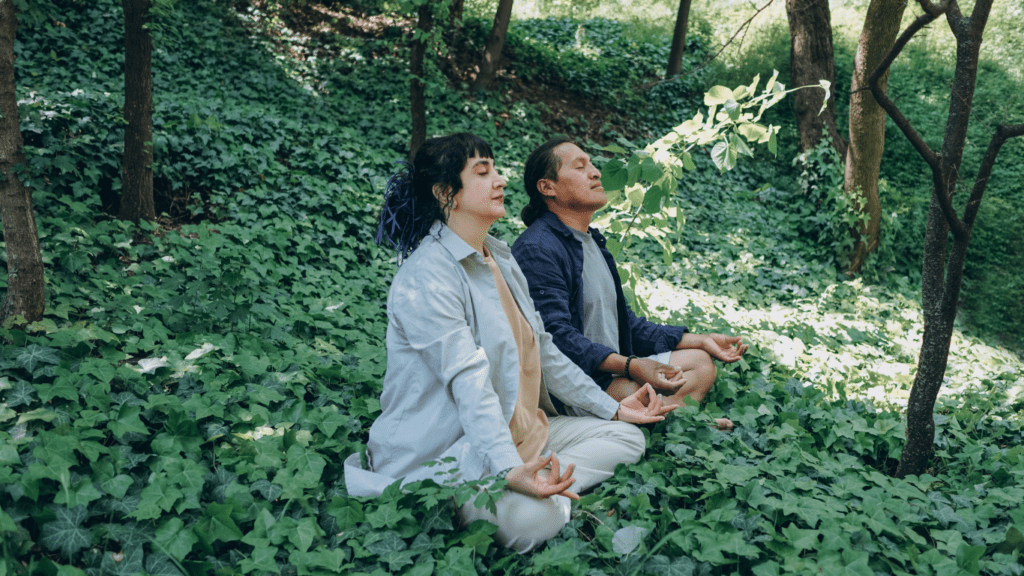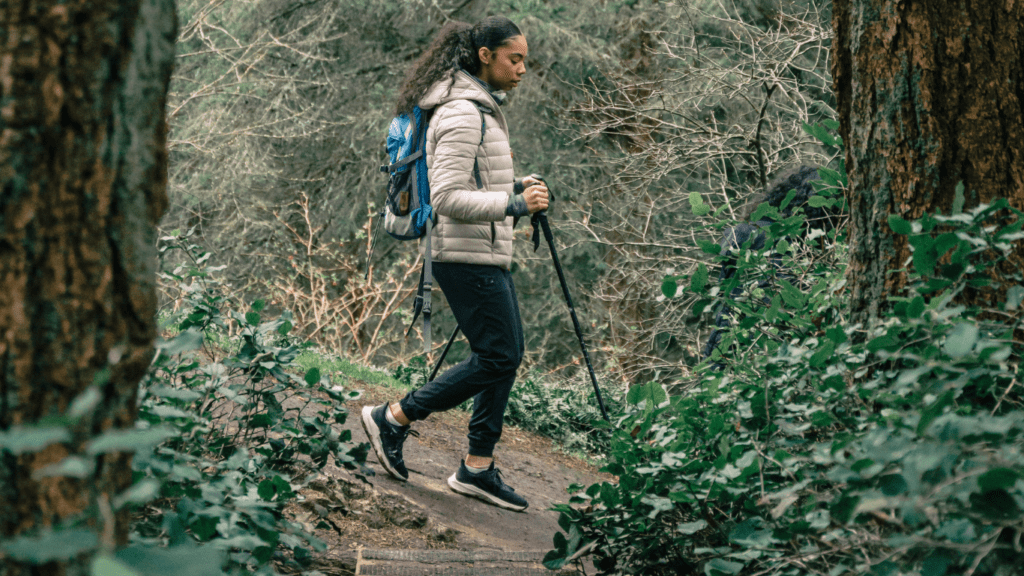The Benefits Of Mindful Hiking
Mindful hiking offers numerous benefits for the mind and body. Incorporating mindfulness on the trails can positively affect physical health, mental clarity, and emotional well-being.
Physical Health Benefits
Mindful hiking supports cardiovascular health, improves muscular strength, and enhances respiratory function. On a typical hike, my cardiovascular system engages continuously, promoting endurance and heart health due to steady walking and varied terrain. Additionally, hiking uphill, downhill, and on uneven surfaces helps build leg and core muscles. Breathing exercises combined with hiking also improve lung capacity and oxygen intake.
Mental Health Benefits
Mindful hiking enhances concentration, reduces stress, and sharpens cognitive functions. When I focus on my surroundings and breathing, I find it easier to clear my mind and concentrate better. Studies show that time in nature lowers levels of cortisol, the stress hormone. The combination of physical activity and mindfulness also boosts brain function, aiding in better decision-making and problem-solving skills.
Emotional Well-Being
Mindful hiking elevates mood, fosters a sense of gratitude, and builds emotional resilience. During hikes, I experience a mood lift from endorphin release. Being present in nature helps me find joy in small moments, leading to a greater sense of gratitude. Regular mindful hikes also contribute to emotional resilience, providing a natural way to manage and process emotions effectively.
Preparing For A Mindful Hike
Before heading out on a mindful hike, taking a few preparatory steps ensures a fulfilling and seamless experience. Mindful hiking involves an intentional approach to not just walking, but connecting with nature and oneself.
Choosing The Right Trail
Selecting the ideal trail makes a significant difference in the mindful hiking experience. Consider the trail difficulty, terrain, and length. Beginners benefit from shorter, well-marked trails (e.g., 2 to 5 miles) with moderate elevation changes. Experienced hikers might prefer longer, more challenging paths (e.g., over 7 miles) with varied terrain. Prior research on the trail’s flora and fauna can deepen the connection with nature.
Packing Essentials
Carrying the right gear helps maintain focus during the hike. A lightweight backpack (under 20 pounds) containing the following items enhances comfort and safety:
- Water: At least 2 liters for hydration.
- Snacks: Nutrient-dense options like nuts, dried fruit, and energy bars.
- First-aid kit: Basic supplies for minor injuries.
- Map or GPS: Navigation tools to stay on track.
- Layers: Weather-appropriate clothing, including a waterproof jacket.
- Sun protection: Hat, sunglasses, and sunscreen.
- Journal or notepad: For noting reflections or observations.
Setting Intentions
Setting clear intentions transforms a regular hike into a mindful experience. Before starting, take a moment to reflect on the purpose of the hike. Possible intentions include practicing gratitude, focusing on breath, observing nature’s details, or releasing stress. Write down or mentally acknowledge the intention to reinforce mindfulness during the hike.
Mindfulness Techniques On The Trail

Practicing mindfulness while hiking can transform an ordinary walk into a profound, rejuvenating experience. Here are some effective techniques to incorporate into your mindful hiking practice.
Breathing Exercises
- Focusing on your breath helps ground your awareness in the present moment.
- Start with deep, diaphragmatic breaths, inhaling through my nose and exhaling through my mouth.
- Synchronize your breathing with your steps; for example, inhale for four steps and exhale for four steps.
- This rhythmic breathing not only calms the mind but also enhances physical endurance.
Grounding Techniques
Connecting with the earth beneath you reinforces your presence in the moment. I often stand still, feeling the ground’s texture and stability. Press your feet firmly into the soil, rocks, or leaves, and consciously note the sensations. Another method is to visualize roots growing from your feet into the ground, providing a sense of stability and connection.
Sensory Awareness
Engaging your senses heightens the experience of the trail. I take a moment to consciously observe the sights, sounds, smells, and textures around me. Notice the colors of the leaves, the sound of birdsong, the scent of pine, and the feel of the breeze on your skin. This sensory engagement not only enriches the hike but also brings your attention fully to the present.
Connecting With Nature
Connecting with nature on mindful hikes enriches the overall experience, fostering deeper appreciation and awareness. By engaging our senses and observing the natural world, we cultivate a strong bond with the environment.
Observing Wildlife
Spotting animals on the trail can be a thrilling experience. Birds, deer, and small mammals reveal themselves if one moves quietly and pays attention. I often listen for bird calls or rustling leaves to spot wildlife. Using a pocket guide to identify species adds an educational element to hikes. Observing animal behavior reminds us of nature’s complexity, enhancing our mindfulness practice.
Engaging With The Environment
Touching trees, smelling flowers, and examining rocks heighten sensory engagement. I pause often to feel the bark of a tree or the texture of a leaf. Picking up interesting stones or touching cool water connects me physically with nature. These small acts make even familiar trails feel new and engaging. Immersing myself in these sensations strengthens my connection to the environment.
Journaling Your Experience
Writing about my hike solidifies the experience and deepens reflection. I carry a small notebook to jot down thoughts, feelings, and observations. Documenting wildlife sightings, trail conditions, and personal reflections provides a record of growth in mindfulness and environmental awareness. Looking back at my entries, I notice patterns and insights that enrich future hikes.
Post-Hike Reflections
Reflecting on a hike offers a chance to consolidate the benefits of mindfulness experienced on the trail. Post-hike reflections deepen the connection with nature and enhance overall wellness.
Stretching And Relaxation
After a hike, stretching helps alleviate muscle tension and promotes relaxation. I always start with gentle stretches for my legs, arms, and back. These stretches improve flexibility and prevent soreness. My favorite stretches include hamstring stretches, calf raises, and shoulder rolls. Incorporating deep breathing during stretching further enhances relaxation by calming the nervous system.
Reflecting On Your Journey
Taking time to reflect on the hike deepens the mindfulness practice. I often use a journal to document my experiences. I write about the sights, sounds, and feelings I encountered. This reflection helps me appreciate the journey and reinforces positive emotions. Additionally, I find it useful to note any challenges or insights gained during the hike, as this can inform future hikes and personal growth.
Integrating Mindfulness Into Daily Life
Translating the mindfulness practiced on the trails to daily life enhances overall well-being. I often incorporate simple mindfulness techniques—such as deep breathing, sensory awareness, and grounding exercises—into my daily routine. This consistent practice nurtures a continuous state of mindfulness, promoting mental clarity and emotional balance beyond the trails.




